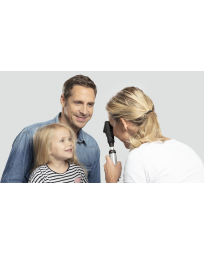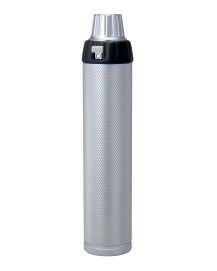
HEINE Retinoscope Trainer - Model Eye
HEINE Retinoscope Trainer
This model eye is ideal for teaching and practice. The pupil diameter and refractive error can be set exactly and are therefore reproducible. The front lens compartment holder accepts up to two trial lenses. The cylinder can be read from the graduated scale.
- Scale: 0° – 180° for cylinder determination
- Diameter of pupil variable: 2, 3, 4, 5, 6, 8 mm
- Optics: Optical glass, achromatic lens, focal length F = 32 mm
- Trainer body made of metal: Extremely stable and durable
- Angle of examination variable







